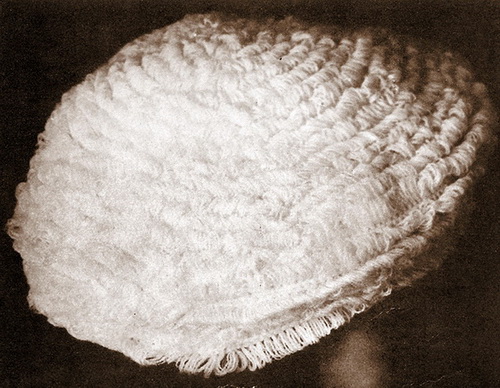
An original addition to clothing is taking. Cook 100 gr. synthetic type wool yarn in three addition and a hook № 3.
Buklirovannye beret knit pattern. To crochet a chain of 140 loops and close it in the ring. You can tie it 140 columns without nakida and tie five rows of columns without nakida, forming the edge of the beret. Then go to a bouclé pattern.
In the description of the knitting we will consider only the rows associated sequential columns with nakida, in which you can do obuvki and allowances, not to mention the other series.
So, over the edge of the beret of 140 columns without nakida knit row with long loops. In the first row of columns with nakida can add 40 columns with nakida, column every three or four columns. This extension is necessary for the formation of a beret over his edge of the flange, which fits tightly to the head. To tie up five rows, each with 180 columns with nakida.
In the seventh row to add five more columns with nakida and knit to the tenth, inclusive of a number, adding each row has five columns with nakida.
From the 11th row to begin to subtract by 15 columns with nakida in each row to the 22nd row, inclusive.
All the addition of subtraction to make equal distance in a row, which is obtained by dividing the number of columns of the previous row by the number of increases or ubavo. So, in the seventh row to add the column with nakida at intervals of 180:5=36 columns and 11 rows to subtract one column every 200:15=13 columns.
In the past the 23rd row to tie 7-8 columns without nakida with long loops, close it, trim the thread and tuck the end under the loop of the previous row.
Scheme knitting beret the following:
The number is the Number of increases (+) and obivok ( - ) is the Number of columns with nakida
1-6 - 180 7 +5 185 8 +5 190
9 +5 195
10 +5 200
11 -15 185
12 -15 170
13 -15 155
14 -15 140
15 -15 125
16 -15 110
17 -15 95
18 -15 80
19 -15 65
20 -15 50
21 -15 35
22 -15 20
In the past the 23rd row to tie 7-8 columns without nakida with long loops, close it, trim the thread and tuck the end under the loop of the previous row.



